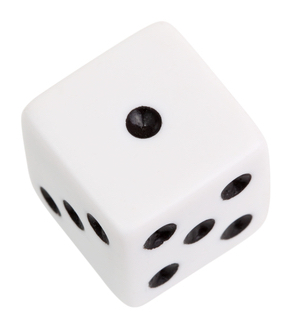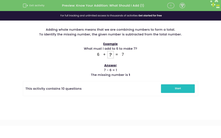Adding whole numbers means that we are combining numbers to form a total.
Example:
6 + 1 = 7
From the calculation above, we also know that 1 + 6 = 7
We can also use the calculation to help us solve two subtraction problems:
7 - 1 = 6
7 - 6 = 1
So, knowing the answer to one addition problem, gives us three other answers!
Brilliant stuff, eh?

Sometimes, calculations can have gaps in the middle, instead of at the end.
We can work them out by rearranging the order of the calculation.
For example, look at this problem:
6 + ? = 7
This question is asking us what we need to add to 6 to get 7.
If we change the order of the calculation, it becomes much easier to do:
7 - 6 = ?
You know the answer to this one!
7 - 6 = 1
So, the missing number is 1

Let's try another one.
What is the mystery number in this calculation?
2 + ? = 4
You can answer this in two ways.
You can count on from 2 to 4. How many numbers did you count on? It was 2, so that's your answer!
Or you can rearrange the order:
4 - 2 = ?
Now you can subtract 2 from 4. Surprise, surprise, the answer is 2.
4 - 2 = 2
So the mystery number is 2

Let's have a go at some questions now.









